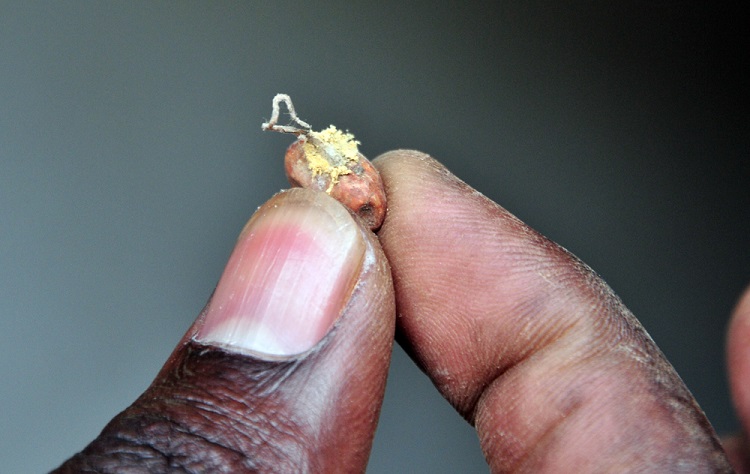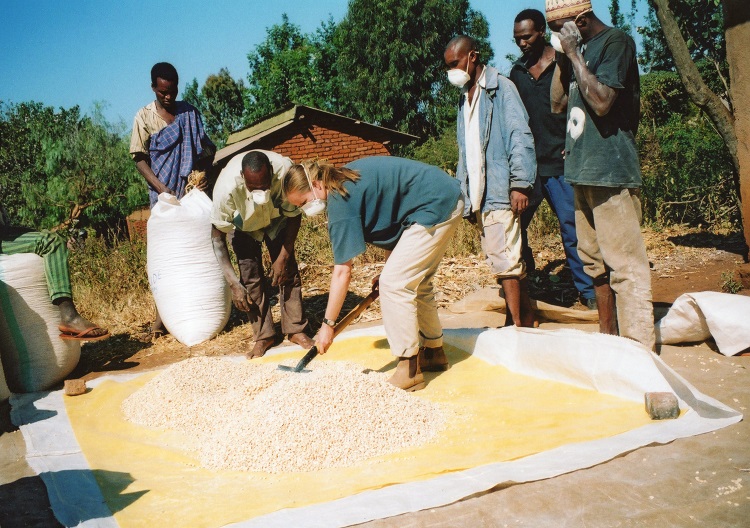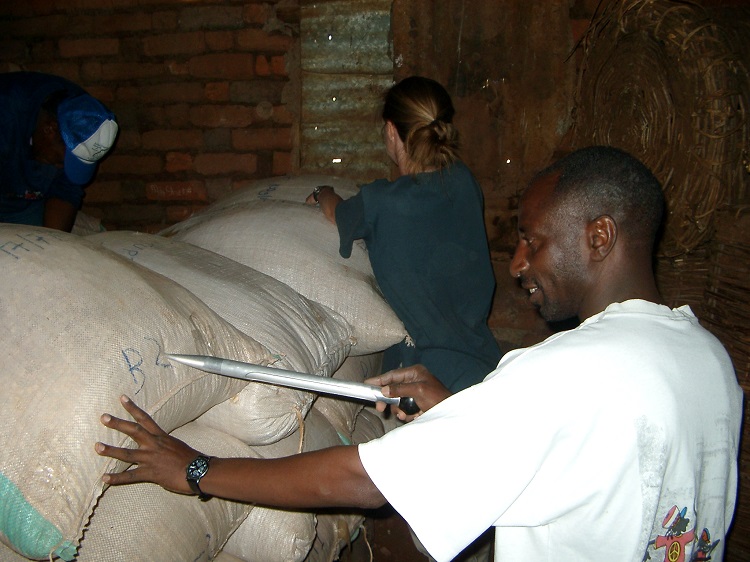
Postharvest management is about making sure that each link in a value chain is working optimally, as crops move from harvest to consumption. Unfortunately, that is not currently the case. It is estimated that fifteen percent of all the cereal grain harvested in sub-Saharan Africa is lost or wasted after harvest. This amounts to an annual loss of US$4 billion, or the annual caloric requirement of at least 48 million people – and this becomes even more shocking when combined with the postharvest losses of the more perishable root crops and fruits and vegetables. However, postharvest losses go far beyond quantity loss, encompassing what is lost in terms of nutrients, food safety hazards, and reduced prices, creating a significant impact on people’s lives and livelihoods. With 307 million people in sub-Saharan Africa already severely food insecure and the population projected to double by 2050 – the need to reduce postharvest losses and improve food security through better postharvest management has never been more urgent.
 NRI’s Dr Tanya Stathers is involved in a global movement to define effective actions to improve postharvest management at scale. In September 2017, she attended a Postharvest Loss (PHL) Workshop run by development organisation HELVETAS Swiss Intercooperation at the Rockefeller Foundation’s ‘Bellagio Center’ in Italy. There, world-renowned PHL experts from academia, the private sector, non-governmental organisations and funding bodies gathered to share their experiences and visions for improved postharvest management. One of the main outcomes of the workshop is the ‘Bellagio Statement on Postharvest Management’ – a collective commitment to collaborate and scale-up effective actions. The Bellagio Statement was released on 26th March 2018.
NRI’s Dr Tanya Stathers is involved in a global movement to define effective actions to improve postharvest management at scale. In September 2017, she attended a Postharvest Loss (PHL) Workshop run by development organisation HELVETAS Swiss Intercooperation at the Rockefeller Foundation’s ‘Bellagio Center’ in Italy. There, world-renowned PHL experts from academia, the private sector, non-governmental organisations and funding bodies gathered to share their experiences and visions for improved postharvest management. One of the main outcomes of the workshop is the ‘Bellagio Statement on Postharvest Management’ – a collective commitment to collaborate and scale-up effective actions. The Bellagio Statement was released on 26th March 2018.
 “There’s not yet sufficient awareness about PHLs, about the scale of this and what it means to people’s livelihoods,” says Dr Stathers in a one-minute video filmed during the workshop. “It’s not yet shocking enough; we need to raise further awareness about it, and to do that, we need to communicate the impact that PHLs have on people. We need to talk about the economic impacts, the nutrition impact, the food safety impacts linked to aflatoxins and pesticide residues.”
“There’s not yet sufficient awareness about PHLs, about the scale of this and what it means to people’s livelihoods,” says Dr Stathers in a one-minute video filmed during the workshop. “It’s not yet shocking enough; we need to raise further awareness about it, and to do that, we need to communicate the impact that PHLs have on people. We need to talk about the economic impacts, the nutrition impact, the food safety impacts linked to aflatoxins and pesticide residues.”
The Bellagio Statement includes four key areas that need to be addressed in order for postharvest management to be placed at the centre of sustainable development strategies and policy: Awareness Raising and Communications, Private Sector Engagement, Coherence and Coordination, and Policy Dialogue and Action.
You can read the full Bellagio Statement on Postharvest Management here.
The official website includes further information and documents including:
- Press release
- Blogposts on Improved postharvest management – a key contributor to SDG successes
- One-minute videos from participants
- Recent research and studies
Links: Tanya Stathers’ profile | Bellagio Statement website | Bellagio Center, Rockefeller Foundation | Helvetas
A few examples of NRI’s postharvest work include:
- APHLIS, the ‘African Postharvest Losses Information System’, created in 2010 by NRI and partners. APHLIS is a scientific model producing calculated estimates of postharvest losses of cereal crops across sub-Saharan Africa. The team is now expanding the information system through APHLIS+, and will include postharvest loss estimates of a wider range of staple food crops, going beyond quantitative estimates of loss to include estimates of the nutritional and financial value of postharvest losses.
- Practical training materials and curriculum for extensionists, farmers and warehouse managers on various topics including Improving Grain Postharvest Handling and Storage, a training course and manual prepared by NRI on behalf of the World Food Programme.
- ‘Nutri-P-Loss’ project run under the IMMANA initiative, examining losses in terms of their nutritional composition, including the quantity of vitamins, minerals and proteins that are lost.
- Practical training in Food Safety and Quality Management at different levels from small-scale food processors to MSc degree students.
- Cassava: Adding Value for Africa (C:AVA), which developed value chains for High Quality Cassava Flour (HQCF) in Ghana, Tanzania, Uganda, Nigeria and Malawi, and the second phase of the project, CAVA II, led by the Federal University of Agriculture Abeokuta, Nigeria.
- Scientific adviser to the AgResults on-farm grain storage pilot, an innovative multi-donor funded market-pull initiative which is using prizes to incentivise the private sector to provide grain storage solutions for smallholder farmers
- Cutting edge research into postharvest quality maintenance of a range of perishables fruit and vegetable products
- Research trials in East Africa on commercial-scale curing and cool storage of fresh orange-fleshed sweetpotato roots for processing or fresh root markets
- Analysis of postharvest innovation systems and multi-stakeholder grain storage action learning trials
If you are interested in finding out about any of the above or other areas of NRI’s extensive postharvest work, please visit the NRI Postharvest Loss Reduction Centre or contact us through Prof Ben Bennett.

